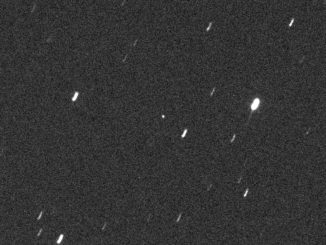
asteroid


Seek out 1998 OR2, the brightest predicted near-Earth asteroid encounter of 2020
A near-Earth object (NEO) and potentially hazardous asteroid (PHA) with the catchy official name of 52768 (1998 OR2) passes just 16.4 lunar distances (6.3 million kilometres) from Earth at 09:56 UT on Wednesday, 29 April 2020. Here’s our guide to locating this fascinating asteroid in 15-cm (6-inch) aperture telescopes and smaller from the UK this month.




Watch asteroid Pallas’ close brush with star Eta Boötis near Arcturus on 10 April
For ten nights starting 5 April 2019, asteroid 2 Pallas and unmistakable Arcturus – the northern celestial hemisphere’s brightest star – lie within the same field of view of typical 8× binoculars. Also, don’t miss magnitude +7.9 Pallas’s very close conjunction with magnitude +2.7 star eta (η) Boötis at 22h UT (11pm BST) on the night of 10 April.

See space rock 2018 RC whizz by Earth closer than the Moon this weekend
Like buses, you can wait ages for a near-Earth asteroid – then two come along in quick succession. This weekend you also have the opportunity to view a 70-metre-wide space rock known as 2018 RC in backyard telescopes of 6-inch (15-cm) aperture and larger as its hurtles past Earth closer than the Moon.

Let Saturn be your guide to finding asteroid Vesta at its brightest
Many of you may have tracked down an asteroid with binoculars or a telescope, but have you ever seen one with the naked eye? If not, then June presents you with an opportunity to see the brightest, 4 Vesta, at a close opposition. What’s more, ringed planet Saturn lies close by to act as a convenient guide.


